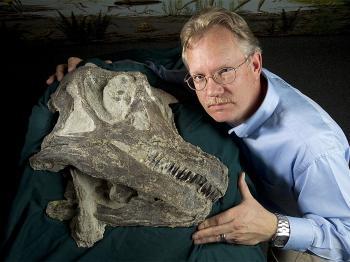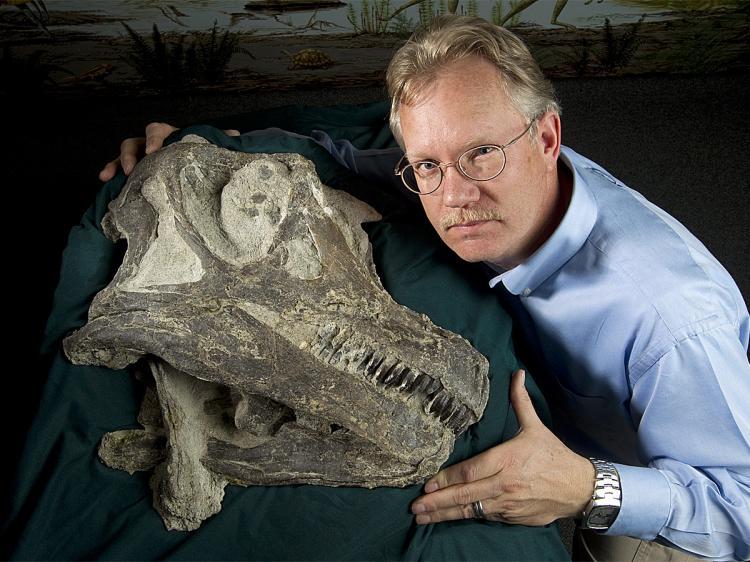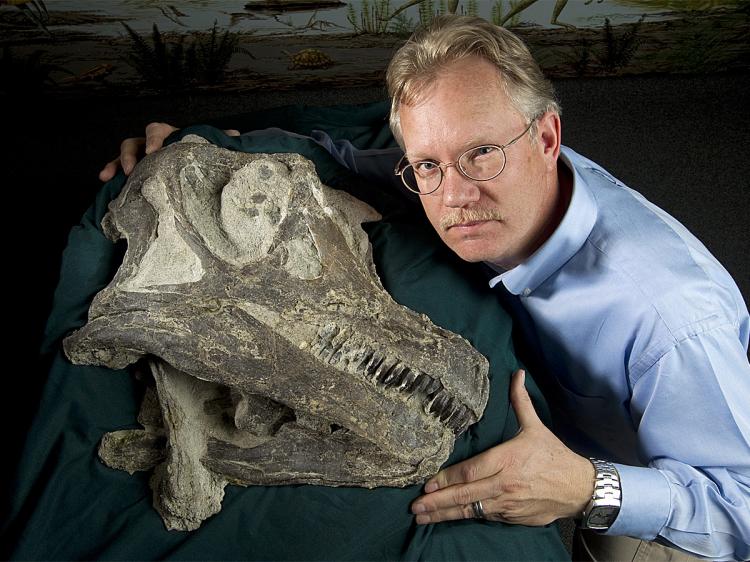A team of paleontologists have uncovered a new species of dinosaur in a quarry at the Dinosaur National Monument in eastern Utah. The newly named Abydosaurus mcintoshi belongs to the family of sauropods or massive, long-necked, four-legged herbivores that include members such as the Brachiosaurus.
The most significant aspect of the discovery is that the team uncovered a total of four heads, with two of them being fully intact. This is very rare with sauropod fossil finds. Complete skulls for only 8 out of over 120 known varieties have presently been found due to their skulls being composed of very thin and delicate bones held together by soft tissue not prone to fossilizing well.
The fossils were encased in 105-million-year-old hardened sandstone at the monument’s Cedar Mountain Formation that even jackhammers and concrete saws had difficulty penetrating. At one point, paleontologists had to resort to explosives to excavate the fossils.
According to Dr. Brooks Britt of Brigham Young University, the skulls belong to juveniles estimated to be approximately 25 feet (7.6 meters) in length, which is less than a third of the estimated length of an adult believed to be comparative in size to the much older Brachiosaurus which roamed the earth some 150 million years ago at about 82 feet (25 meters) long.
The find has also given scientists insight into how some of the largest animals that walked the earth managed to keep themselves fed. “They didn’t chew their food, they just grabbed it and swallowed it. The skulls are only one two-hundredth of total body volume and don’t have an elaborate chewing system,” Britt said in a press release.
In addition to having light heads suitable for moving at the end of their long necks, sauropods ate plants and continually replaced their teeth throughout their lives.
During the Jurassic Period, sauropods exhibited a variety of tooth shapes and sizes, but by the end of the Dinosaur Age they exhibited thin pencil-like teeth. Abydosaurus is somewhere in between, having smaller teeth and more rapid tooth replacement.
The most significant aspect of the discovery is that the team uncovered a total of four heads, with two of them being fully intact. This is very rare with sauropod fossil finds. Complete skulls for only 8 out of over 120 known varieties have presently been found due to their skulls being composed of very thin and delicate bones held together by soft tissue not prone to fossilizing well.
The fossils were encased in 105-million-year-old hardened sandstone at the monument’s Cedar Mountain Formation that even jackhammers and concrete saws had difficulty penetrating. At one point, paleontologists had to resort to explosives to excavate the fossils.
According to Dr. Brooks Britt of Brigham Young University, the skulls belong to juveniles estimated to be approximately 25 feet (7.6 meters) in length, which is less than a third of the estimated length of an adult believed to be comparative in size to the much older Brachiosaurus which roamed the earth some 150 million years ago at about 82 feet (25 meters) long.
The find has also given scientists insight into how some of the largest animals that walked the earth managed to keep themselves fed. “They didn’t chew their food, they just grabbed it and swallowed it. The skulls are only one two-hundredth of total body volume and don’t have an elaborate chewing system,” Britt said in a press release.
In addition to having light heads suitable for moving at the end of their long necks, sauropods ate plants and continually replaced their teeth throughout their lives.
During the Jurassic Period, sauropods exhibited a variety of tooth shapes and sizes, but by the end of the Dinosaur Age they exhibited thin pencil-like teeth. Abydosaurus is somewhere in between, having smaller teeth and more rapid tooth replacement.





